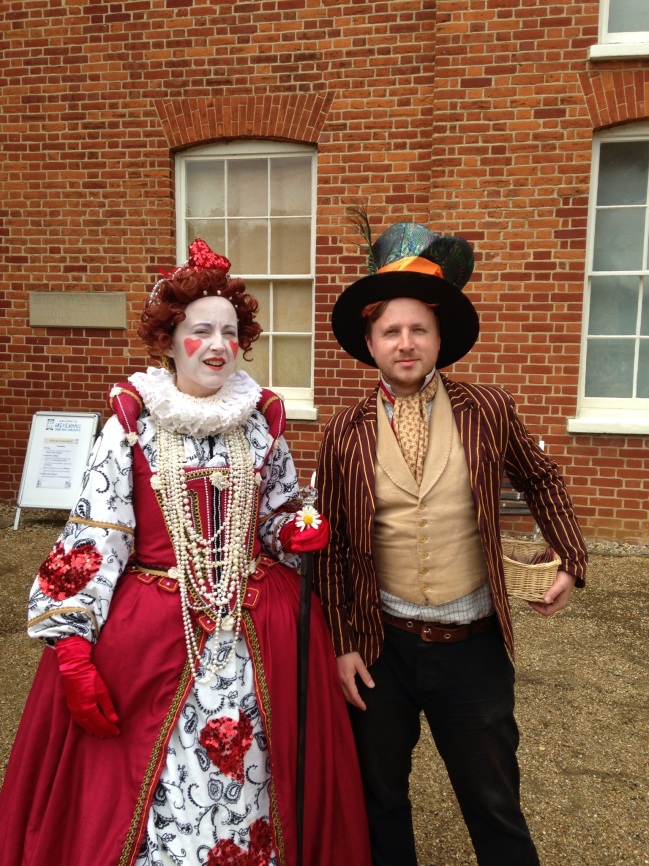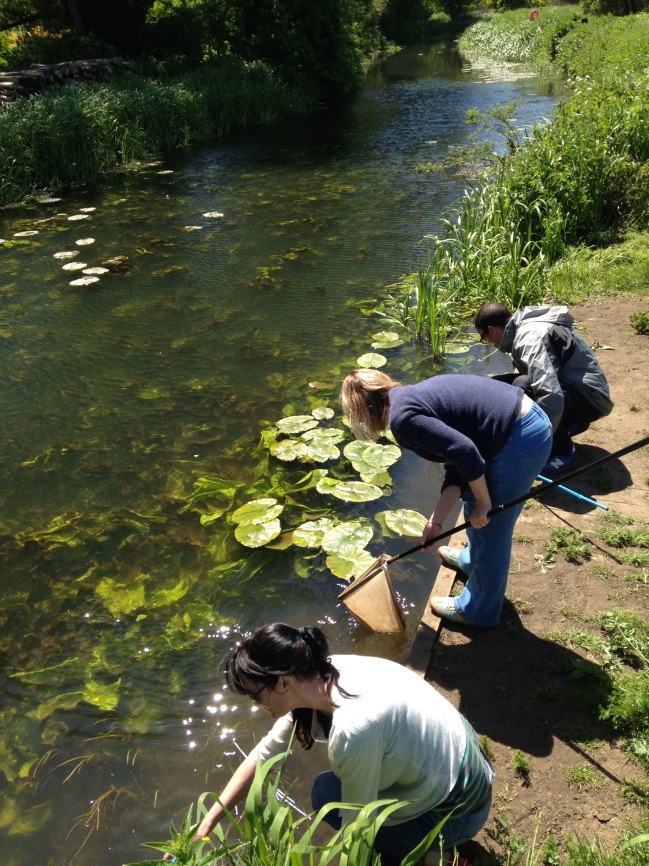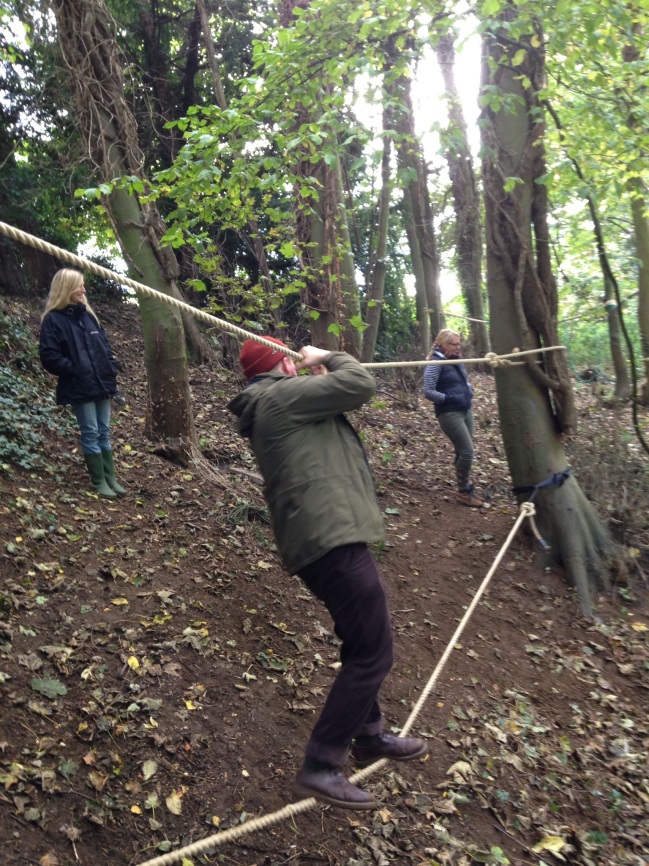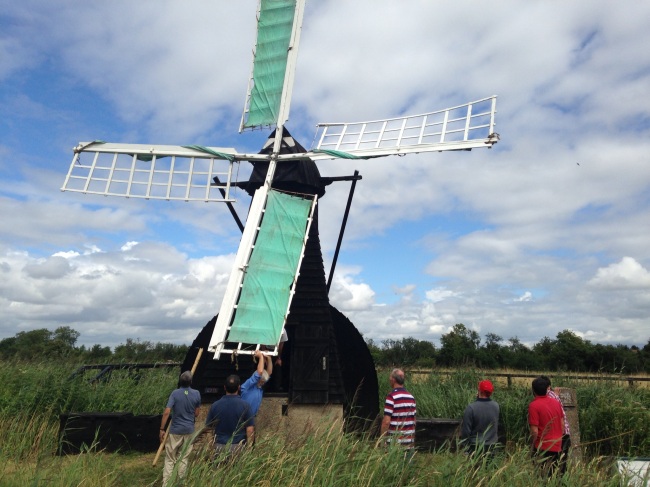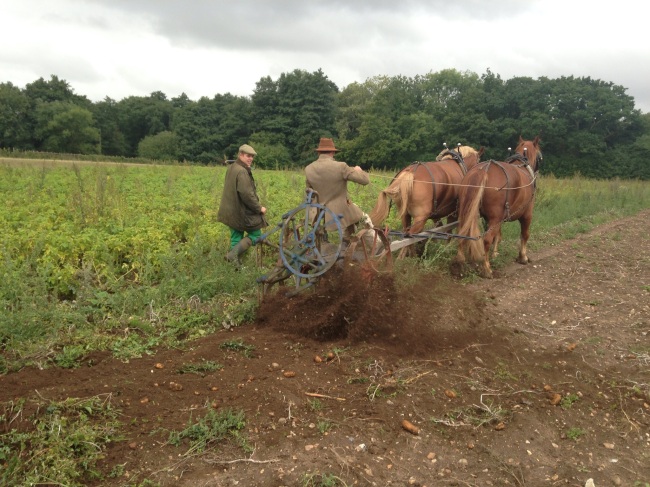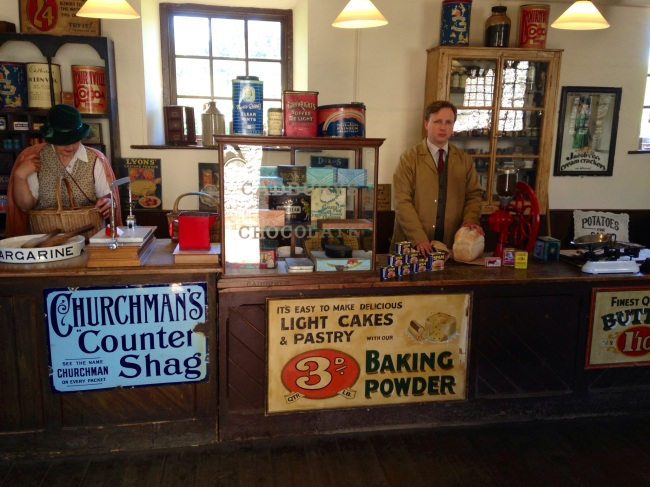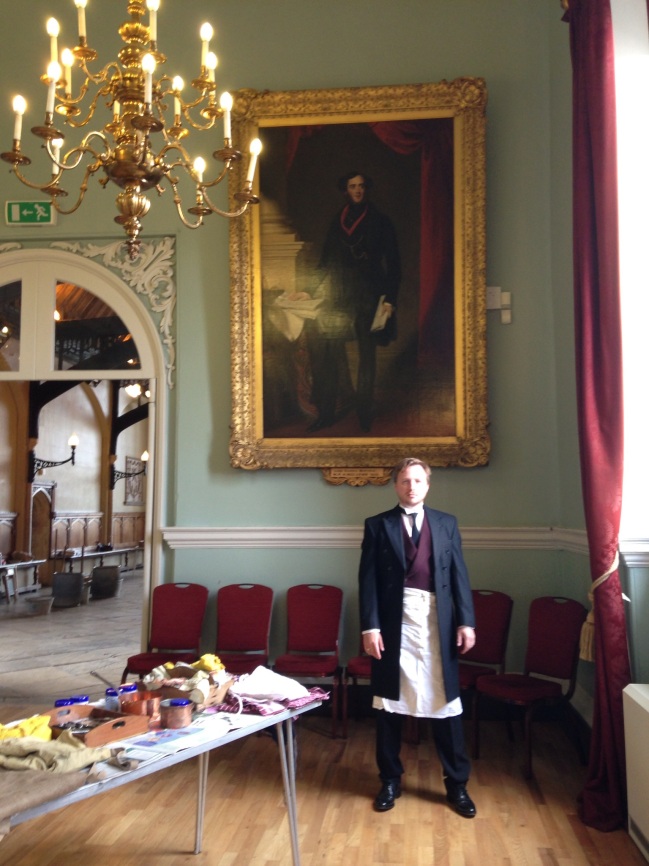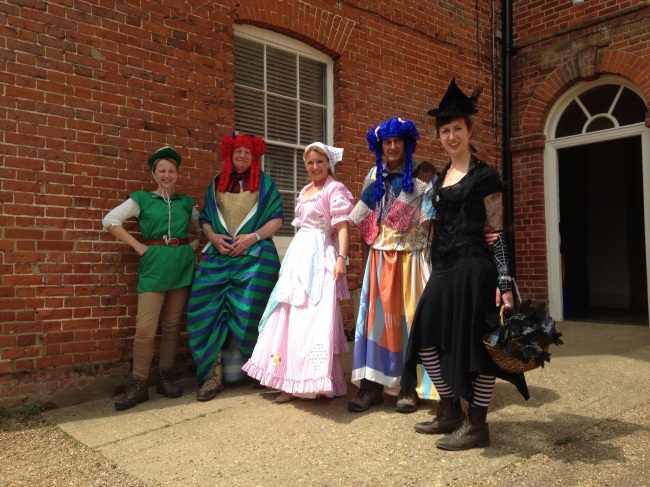Hi my name is Daniel and I am a new Skills For The Future Trainee at Gressenhall Farm and Workhouse; embarking on an eighteen-month placement alongside Lee Bassett. We began our Gressenhall adventure a little over a month ago now as Landscape Management Trainees and what a busy few weeks it has been!
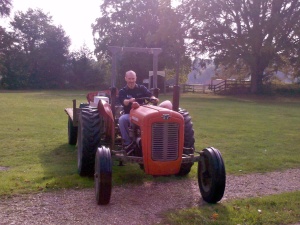
Look Mum I’m driving a tractor!
Already we have been cutting and laying hedges, learning to use the farm tractors, picking apples in the orchard and learning all about the history of this amazing site, not to mention a trip to the open-air museum at Weald & Downland in West Sussex, and a very interesting and informative demonstration from Farm Officer Richard Dalton in the use of heavy horses in traditional farming. I have just returned from a week-long Chainsaw training course in Suffolk which I hope will be an important first step in attaining the practical skills to help me find work when my time at Gressenhall comes to an end.

Cross-cutting during my chainsaw course

Swinging the bilhook…learning to lay a hedge!
I still have to pinch myself each morning when I arrive at work to make sure I’m not actually dreaming because it’s really a privilege to be working and learning in such a beautiful setting as this, surrounded by the Norfolk countryside; with ploughed fields, meadows, handsome horses and even a stream to walk by. The farm compliments the grand old buildings at the opposite end of the site, where human history of a very different kind is displayed and interpreted within the walls of the Workhouse; an eighteenth-century former house of industry that imposes itself onto the landscape with a now thankfully benign presence, allowing it to be appreciated as a fine building in its own right.

A packed Gressenhall on Apple Day
This will be a busy eighteen months for me as the last month has shown; I intend to make the most of every day whether it be at Gressenhall itself where I will be learning to manage the woodland and hedgerows, or on placement with either Norfolk Wildlife Trust or Sculthorpe Hawk & Owl Trust, learning about how they manage their vast estates for the conservation of wildlife and the enjoyment of the Public. That poses a key question for me and one which I hope will be answered in my time here, helping me to decide on my future career path :
How does any sensitive organisation balance the requirements of practical conservation alongside the needs of wildlife, and the expectations of the wider public?
As an ‘enlightened amateur’ whose interests include not only the traditional methods of managing the land, but also the good husbandry of animals and wildlife I already have a picture in my head of what the answer should be. Facing the realities and the different perspectives of all the various groups in the so-called environmental sector will be both interesting and challenging. I wonder if my views will change over the next year or so; I suspect that they probably will!
It isn’t just Gressenhall as part of the Museums Service, or the disparate Wildlife and Conservation Trusts in Norfolk who struggle with the challenges hinted at above; as our trip to Weald & Downland demonstrated. Part of the South Downs National Park, the 50-acre site is similar in proportions to Gressenhall Farm & Workhouse; although both the landscape and its management are very different to here. The museum is largely centred on its unrivalled display of buildings stretching back in time to the medieval period and amassed from sites around the south of England and East Anglia. The buildings are displayed within a historically accurate recreation of the Weald (from the middle english ‘wold’ or wealden’, meaning a forest or woodland) and Downland (rolling, open chalk grasslands). It’s a quite beautiful setting; thatched country manor houses and cottages nestling in lush green hills beside a lake. Truly a vision of a bygone age!
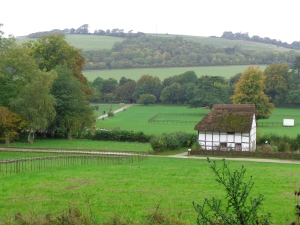
Magnificent Weald & Downland
The trip was a useful and informative exploration of another beautiful site whose staff and volunteers alike face the daunting prospect of trying to maintain a balance between saving an endangered landscape and its historic buildings, and providing a purposeful and ultimately engaging interpretation for the visiting public that is cost-effective and value for money. Whether it is a board of trustees (in the case of Weald & Downland) or the Taxpayer (as in the case of Gressenhall) it will always come down to expenditure and the justification behind it.
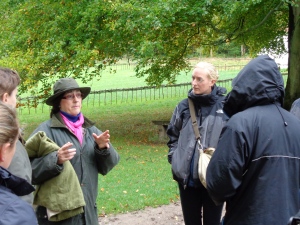
Interpretation at the museum…Karen explains.
At Weald & Downland we were given talks from Nick, the Land Management Officer, Karen who is in charge of interpretation, and Mark the horseman. What was most apparent was that through their passion and dedication these individuals are all struggling to provide the best possible experience for the paying visitor, constantly seeking to enhance and improve the land, buildings and exhibits whilst having to fight their respective corners with the board of trustees. As a Land Management Trainee I was very interested to learn about the challenges faced by Nick; what was involved in the day-to-day running and also what opportunities there were further develop the exhibits and their interpretations at the site. Nick is mainly focused on maintaining enough arable land to grow crops of Wheat, Barley and Ryegrass so that the museum can remain largely self-sufficient in providing the raw materials for the many thatched roofs on the displays, flour for the working Mill, and also provide a good portion of the animal feed and bedding for the site.
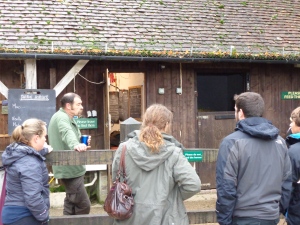
Mark the horseman gives a talk on the use of heavy horse at Weald & Downland. The three Shire Horses work hard at the museum and much like our own Suffolks are a great pull for visitors.

Tacking up…
Land use at the museum is a hotly contested issue, since the drive to bring in more buildings and enhance the events and exhibits at the site mean that farmed land is potentially surrendered for plots to house new displays. Buildings are definitely the priority here and this has always been the case since the first were brought here at the museum’s inception by founder Dr J R Armstrong. That doesn’t mean that there aren’t other examples of human history and interaction with the landscape. In the strip of woodland above the chalk downland there is a charcoal burner’s camp and examples of woodland industry through the ages with a ‘bodger’s camp’ and timber yard exhibiting a large mechanical crane for moving and processing large logs. Down at the main site there is also a working forge, manned by a group of volunteers who produce some of the shoes worn by the three shire horses amongst other things.
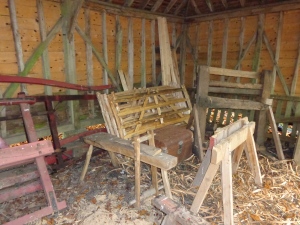
‘Bodger’s camp’, showing a shave horse and some fence panels and hurdles that have been made.
I was asked to think about what, if anything, I would do to improve the visitor experience at Weald & Downland; if money wasn’t an issue. It isn’t an easy question to answer, but in summing up I would say that enhancing the landscape and making it more part of the museum experience would be the best way. Improving the hedgerows from both a wildlife and interpretive perspective would be a good start; perhaps introducing hedgelaying as we do here at Gressenhall, and having a management plan for sure. More use could be made of the wooded area for educational purposes but also for the paying public; pulling it into the wider museum experience by improvements to access and signage, perhaps.
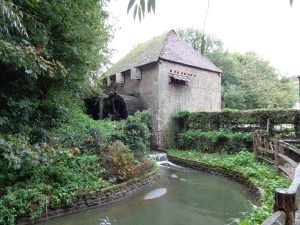
The working water-mill. The varied and imaginative interpretations within the buildings was quite impressive.
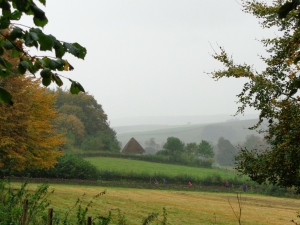
More could be done for the hedgerows at the site…
Well, the rest of November looks packed with a Tree Surveying course at Holt Hall, Tractor Driving course here at the Farm and a trip to Oxburgh Hall planned to examine their management plan. I’m looking forward to these activities and also somehow trying to pass my chainsaw assessment and start my diploma in Environmental Conservation. Bring it on!

